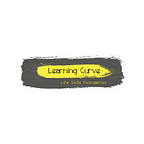Being Mindful!
Here is a little incident that happened to me not long ago. I was shopping for groceries in a Sabji Mandi near my home. I walked across many vendors and randomly stopped in front of one who was selling Cauliflower. I stopped to ask the price, and the vendor replied 40 rupees for one. I was quiet for a while, and then I heard her saying “do you want one or not?” Then I extended my bag, got the Cauliflower, gave a few 10 rupee notes to her, and started walking. While walking to another vendor, I thought of something that had bothered me earlier today. There comes the vendor I bought cauliflower from calling me amma, amma…. I turned around and walked towards her. She gave me a 10 rupee note and told me to always count before making a transaction. She suggested I focus on what I was doing, pointed out that I was lost in my thoughts, and gave her 50 rupees instead. I smiled at her and said thank you. This incident led me to think about what she had suggested to me “be in the moment,” she said. This reminded me of an article I had read a few months ago on Mindfulness. It suggested something similar.
I revisited those readings to understand the construct of Mindfulness. Scott R Bishop, in his article, identified 3 significant features of Mindfulness. They are — ‘being purposeful, present, and accepting.’ For being mindful, one needs to purposefully channel attention to one’s experiences. It means one needs to entirely focus on the present and not let the mind wander to the past or the future. This attention to self needs to be compassionate. Also, one needs to approach any situation in a non-judgmental manner. All these 3 features do not function linearly; they are interwoven into a cyclical process and are interdependent in nature.
Now, let us understand how being Mindful can help us in daily experiences. Dealing with friendly and pleasant situations comes easily to many people, but can we maintain the same calm in situations where one is blamed or confronted? Can being mindful in such situations help us in any way? Kimberly A. Coffey tries to understand the relation between Mindfulness and the regulation of emotions. As mentioned before, Mindfulness nudges one to focus on the present and accept experiences with no judgement. This leads one towards analysing their feelings, situations, and why they are feeling so in a more insightful manner. Being mindful can help people respond responsibly to situations rather than react impulsively and regret it later. This can help in building healthy relationships with others.
To further understand why one would practise Mindfulness, I approached a friend. She considers practising Mindfulness as a state of living and beneficial for all. I asked her, “Why do you practise Mindfulness?” In return, she questioned me, “What is the major cause of stress in your life?”. I felt it was totally unrelated at first; however, I paused for a moment and responded, “I stress a little too much about what if I fail in fulfilling something that is expected from me by people I love.” To this, she smiled and replied that the cause of my stress was two-fold: one, I was worried about something that might or might not happen in the future. Second, I was concerned about what others might think of my failure. She was not wrong, and at that point, she added that these are two main features that Mindfulness tries to promote. That is, being in the present and regulating attention to self-experiences. After having this conversation with her, I challenged myself to practise Mindfulness for at least 10 minutes that day. In those 10 minutes, I aimed to do 3 things:
- Channel my attention towards myself
- Focus on the present. Let the mind not wander to the past, future, or anything beyond what I was experiencing at the moment.
- While in an experience, being compassionate to myself and non-judgmental towards the situation.
It was extremely challenging! You can challenge yourself too! If you would like to share your views on practising Mindfulness, you can write to us at nymisha@learning-curve.co.in. If you would like to explore readings on Mindfulness, here is a list of articles I came across.
List of Articles
Bishop, S. R., Lau, M., Shapiro, S., Carlson, L., Anderson, N. D., Carmody, J., Segal, Z. V., Abbey, S., Speca, M., Velting, D., & Devins, G. (2004). Mindfulness: A proposed operational definition. Clinical Psychology: Science and Practice, 11(3), 230–241. https://doi.org/10.1093/clipsy.bph077
Coffey, Kimberly & Hartman, Marilyn & Fredrickson, Barbara. (2010). Deconstructing Mindfulness and Constructing Mental Health: Understanding Mindfulness and its Mechanisms of Action. Mindfulness. 1. 235–253. 10.1007/s12671–010–0033–2.
Shapiro SL, Carlson LE, Astin JA, Freedman B. Mechanisms of mindfulness. J Clin Psychol. 2006 Mar;62(3):373–86. doi: 10.1002/jclp.20237. PMID: 16385481.
Walsh, J. J., Balint, M. G., SJ, D. R., Fredericksen, L. K., & Madsen, S. (2009). Predicting individual differences in mindfulness: The role of trait anxiety, attachment anxiety and attentional control. Personality and Individual Differences , 46 (2), 94–99.
Nymisha Yadati
Research Specialist
Learning Curve Life Skills Foundation
